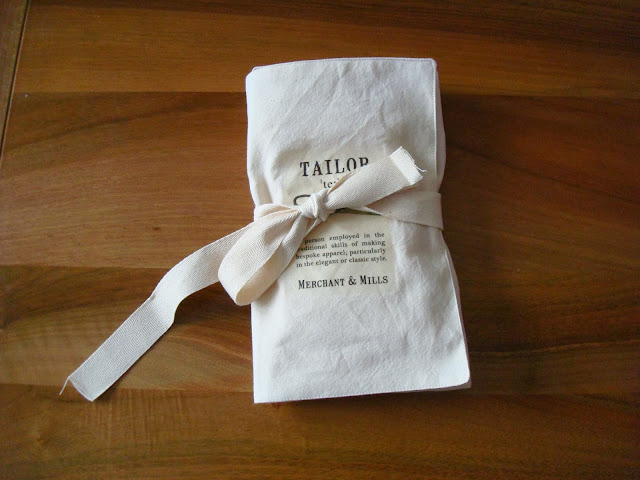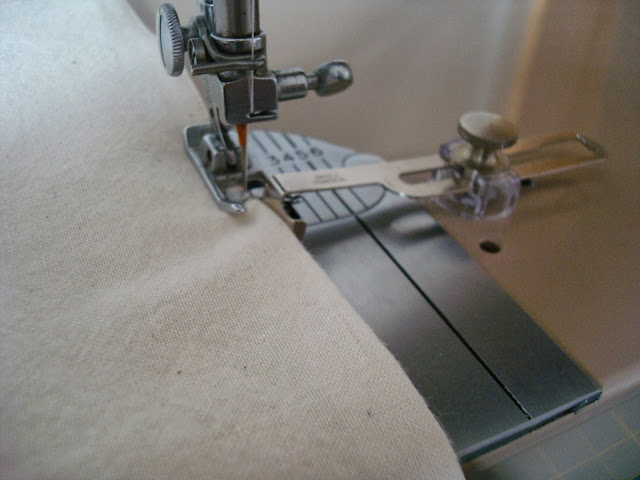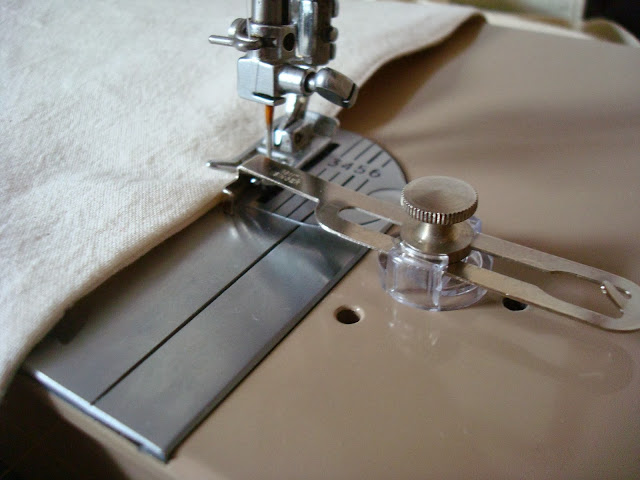 |
| Please excuse my ankles |
I wasn't feeling game enough to do the quilting on the Singer 201K and defaulted to my 'go to' quilter the Singer 401K fitted with the walking foot. I used the same putty-coloured thread to secure the layers as I had used to piece the quilt top. It shows up better from the back.
The fence rail blocks finished at six inches and used the corners of these blocks are the reference point for the diagonal lines of quilting over the central part of the quilt. In this way the lines of quilting are four and a quarter inches apart which should be a nice density for a baby quilt. I quilted in the ditch around the inner border.
This picture shows how well Bill's choice for the backing fabric works. I think it pops without clashing. When I was binding the quilt I wanted to do this in exactly the same way I bound the Log Cabin quilt earlier in the year. I had the blog to remind me but I hadn't been very detailed. I couldn't for the life of me recall which machine I had used to sew the binding onto the front of the Log Cabin quilt. So here is a note to myself for future reference:
The fence rail blocks finished at six inches and used the corners of these blocks are the reference point for the diagonal lines of quilting over the central part of the quilt. In this way the lines of quilting are four and a quarter inches apart which should be a nice density for a baby quilt. I quilted in the ditch around the inner border.
This picture shows how well Bill's choice for the backing fabric works. I think it pops without clashing. When I was binding the quilt I wanted to do this in exactly the same way I bound the Log Cabin quilt earlier in the year. I had the blog to remind me but I hadn't been very detailed. I couldn't for the life of me recall which machine I had used to sew the binding onto the front of the Log Cabin quilt. So here is a note to myself for future reference:
- For the fence rail quilt I used the 401G with the walking foot to sew the binding onto the front of the quilt
- I left eight inch tails at the beginning and of the binding which really made it a lot easier to join them together later
- I then used a size three between and a ladder stitch to sew the binding onto the back of the quilt using the line of machine stitching from the front as a guide for my hand sewing - yet again this took me hours but I still feel it's time well spent. After all this is a gift for a very special little bundle.
 |
| A well-padded friend maybe just as cuddly as a quilt |






























